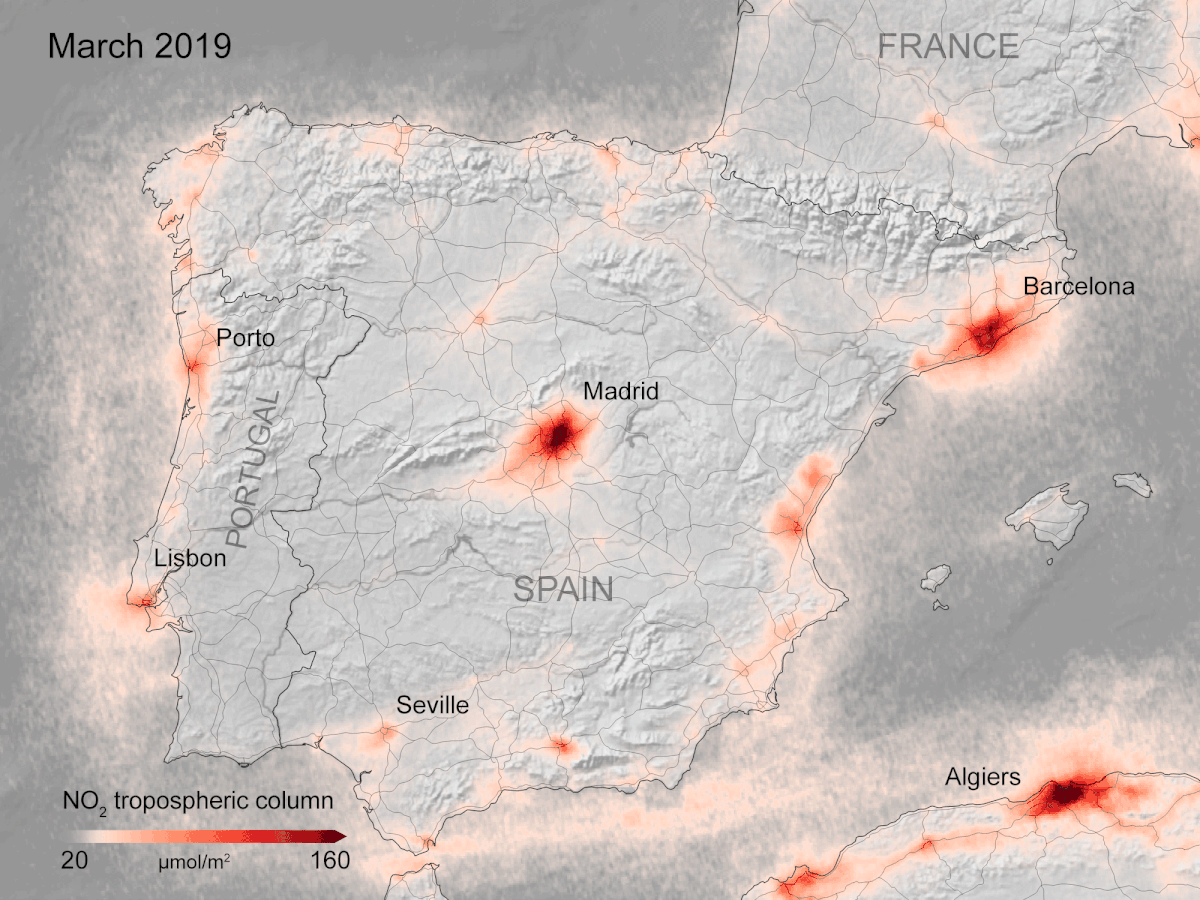New satellite views show impact of coronavirus on emissions, China's night lights

As countries have shut down to slow the spread of the coronavirus pandemic, satellites in orbit around Earth are noticing changes to our home world.
Specifically, orbiting instruments are observing reductions in emissions and in night lighting as people follow orders to stay home and reduce contact with others. Such approaches are vital in slowing the jump from person to person of the new coronavirus that causes the COVID-19 disease. However, these measures are also reducing the visibility of humanity on Earth.
Because the new coronavirus has spread so rapidly, satellites are watching its impacts affect multiple continents at once. Take, for example, Wuhan, China, where the pandemic began with the new year. The first reported death from the disease came in mid-January; quarantine was enacted on the city later that month.
Related: Coronavirus impacts from space: Before-and-after satellite photos
Updates: The coronavirus pandemic impacts on space exploration
Satellite images of the region at night taken in mid-January and in early February show the effects of that quarantine. In particular, these images show reduced night lighting on roads as the transportation of people and goods dramatically decreased with the quarantine. (To best see the differences between the two images, make sure your screen is set to a high brightness level.)
"The lights provide a different perspective on human settlements," Miguel Román, a principal investigator of the "Black Marble" research team that spearheads this work, said in a NASA statement. "We are not just looking at where the roads are; these images are telling us when and if the roads are being used. We are looking at human activities."
China's quarantine measures have also produced changes in the atmosphere overhead, according to satellite observations. Carbon monoxide levels in the troposphere over Wuhan and Beijing have dropped by about 10% since quarantine measures were enacted, according to one recent set of measurements.
Get the Space.com Newsletter
Breaking space news, the latest updates on rocket launches, skywatching events and more!
And, after all, the roads are the same; it is human activities that are changing as a result of these public health measures. Similarly, in Europe and the U.S., satellites have been monitoring how emissions are changing, especially emissions of nitrogen dioxide.
One satellite that is particularly well-suited to these observations is a European Space Agency mission called Copernicus Sentinel-5P, which gathers data about nitrogen dioxide emissions and other key compounds that affect the climate and human health. Although levels of this gas in the atmosphere change with the weather, averaging measurements over a week or two removes these affects, giving scientists an accurate look at how emissions are changing.

Nitrogen dioxide emissions over France compared between a 10-day period this month and the monthly average of March 2019.

Nitrogen dioxide emissions over Italy compared between a 10-day period this month and the monthly average of March 2019.
"The special features of the Copernicus Sentinel-5P satellite, with its high spatial resolution and accurate ability to observe trace gases compared to other atmospheric satellite missions, allows for the generation of these unique nitrogen dioxide concentration measurements from space," Claus Zehner, ESA's Copernicus Sentinel-5P mission manager, said in a statement.
Although ESA's focus has been on the data this spacecraft has gathered over its European member countries, the satellite is studying the U.S. and the rest of the world as well, and that data is publicly available.
The media outlet Earther has grabbed monthly snapshots and compiled them into an interactive map that allows you to compare nitrogen dioxide emissions in the location of your choice as the pandemic has spread.
- Getting sick in space: How would NASA handle an astronaut disease outbreak?
- Dramatic effect of coronavirus lockdowns seen from space
- NASA center in California issues mandatory work-from-home order after employee tests positive for coronavirus
Email Meghan Bartels at mbartels@space.com or follow her @meghanbartels. Follow us on Twitter @Spacedotcom and on Facebook.
OFFER: Save at least 56% with our latest magazine deal!
All About Space magazine takes you on an awe-inspiring journey through our solar system and beyond, from the amazing technology and spacecraft that enables humanity to venture into orbit, to the complexities of space science.
Join our Space Forums to keep talking space on the latest missions, night sky and more! And if you have a news tip, correction or comment, let us know at: community@space.com.

Meghan is a senior writer at Space.com and has more than five years' experience as a science journalist based in New York City. She joined Space.com in July 2018, with previous writing published in outlets including Newsweek and Audubon. Meghan earned an MA in science journalism from New York University and a BA in classics from Georgetown University, and in her free time she enjoys reading and visiting museums. Follow her on Twitter at @meghanbartels.
